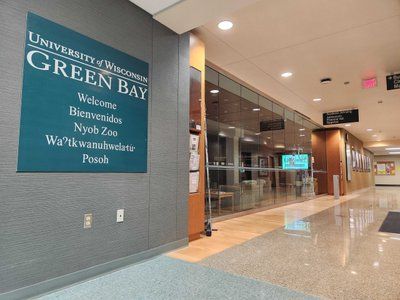Some members of the Wisconsin Legislature wouldn’t vote for streamlined state mining rules if The Lorax himself descended from above to run the drilling rig. Others would vote for any bill that makes it easier to extract ore in Wisconsin, regardless of the risks to land, air and water.
Somewhere in between those extremes are Wisconsin lawmakers who might support the return of iron mining to northern Wisconsin – and the jobs that would come with it – so long as modern environmental standards are met.
Unless there’s a dramatic turn of events, however, those lawmakers may never get another chance to demonstrate that compromise is still possible in Wisconsin.
After the state Senate narrowly rejected a bill to change how state mining permits are issued, the head of Gogebic Taconite announced the company has dropped plans to build an iron mine southeast of Ashland in northwest Wisconsin.
“We get the message,” company president Bill Williams said. “GTac is ending plans to invest in a Wisconsin mine.”
Is that the final word? Company executives who spend millions of dollars on a project only to watch it falter don’t often bluff when it comes to cutting their losses.
Then again, the mining bill was only one vote shy of winding up on Gov. Scott Walker’s desk for his signature. Anything can happen when the clock is ticking toward the end of a legislative floor period, especially if the debate is recast in a way that allows lawmakers to reconsider.
The emerging role of clean technologies in modern mining might provide such a framework.
While opponents of the Gogebic mine are correct to point out the many sins of mining over time, from toxic emissions to acid mine drainage, the industry is undergoing what one expert calls “the quiet, clean mining revolution.”
Dallas Kachan, the former managing director and executive editor of the Cleantech Group, is generally credited with coining the term “cleantech” and helping to launch the cleantech investment class. He has written hundreds of reports and articles on clean technologies and speaks at cleantech events around the world.
In a February column for Renewable Energy News, Kachan wrote that technology is helping mining clean up its act. Those technologies are reducing power needs, lowering water requirements and improving remediation strategies, all of which helps mining companies be a lot cleaner while saving money.
“In other words, now that it’s starting to be less expensive on net for mining companies to be clean, they’re starting to move in that direction,” Kachan wrote.
Among examples he cited is an Arizona project by American Manganese, which is preparing to produce electrolytic manganese from low-grade ore while using a fraction of the normal energy and water. Kachan also noted that Canadian companies BacTech Environmental and REBgold are using a patented biological process to remediate toxins and recover gold. BioteQ Environmental Technologies, another Canadian company, is among companies that Kachan believes have developed ways to remove heavy metals, acids and toxins from mine tailings before they seep into groundwater.
Closer to home, institutions such as the UW-Milwaukee and the UW-Madison are leaders in researching clean water technologies. The state’s water technology “cluster” of companies, large and small, are producing innovative ways to treat and prevent environmental contamination.
Finally, the mine itself would employ science and technology professionals whose jobs would revolve around ensuring environmental compliance. They include chemical engineers, computer programmers, computer systems analysts, electrical engineers, environmental scientists, geochemists, geo-engineers, geophysicists, drafting technologists, metallurgical engineers and quality control engineers.
There’s no guarantee the Gogebic mine will be totally safe, of course, but the combination of new technologies, professional management and continued careful review by the state Department of Natural Resources and the federal government increase the odds of reliably clean operations.
Lawmakers can wait for Dr. Seuss’ Lorax to save the day, or trust that innovations in mining technologies and smart regulations will provide northern Wisconsin with a brighter economic future. That choice, if still available at the 11th hour, seems clear.
Read Journal Sentinel column here.
Still is president of the Wisconsin Technology Council. He is the former associate editor of the Wisconsin State Journal.
###





